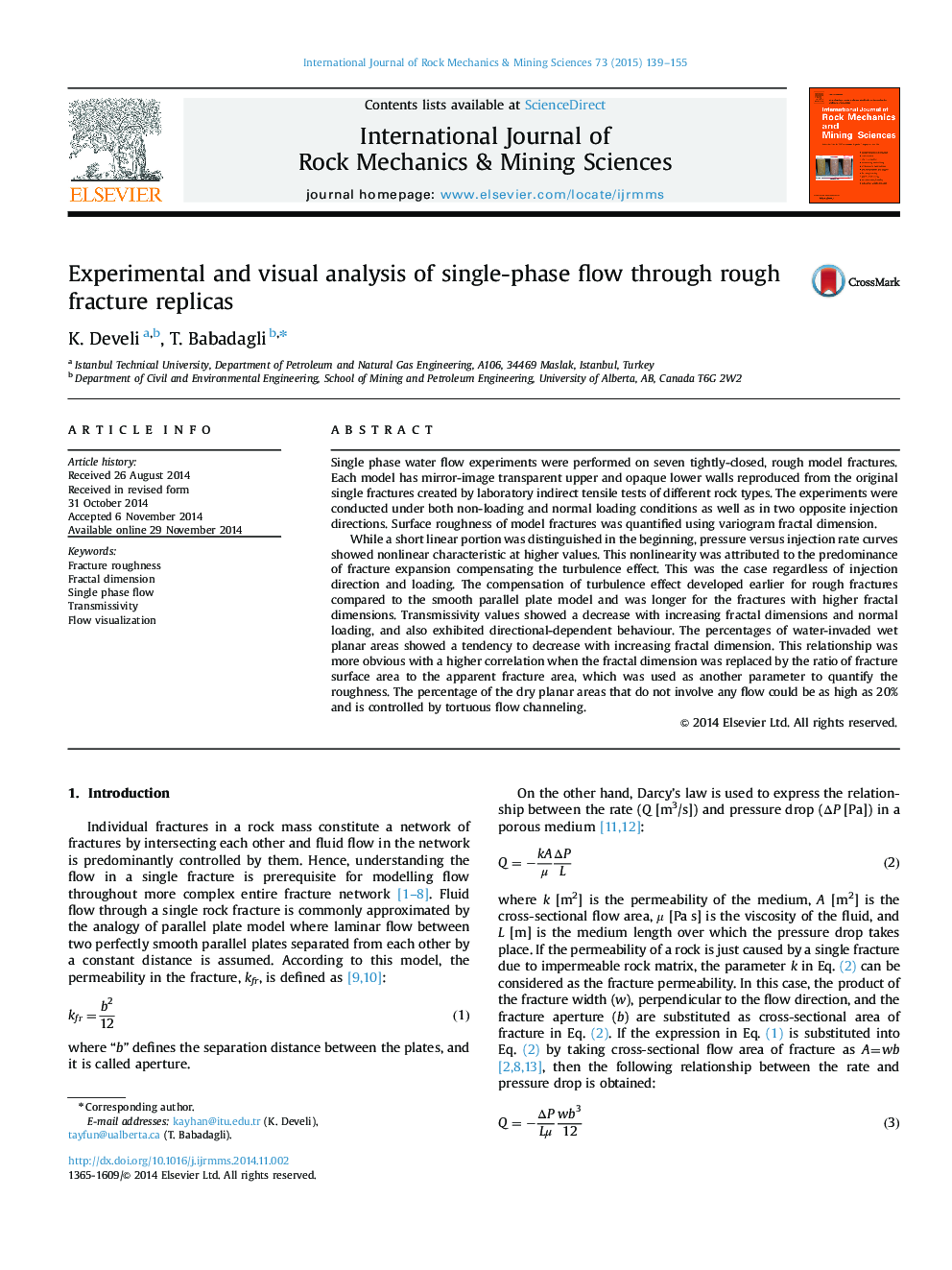| Article ID | Journal | Published Year | Pages | File Type |
|---|---|---|---|---|
| 809069 | International Journal of Rock Mechanics and Mining Sciences | 2015 | 17 Pages |
•Single phase water flow experiments on seven different original replica fractures.•Zero and four different normal loading conditions are applied.•Roughness is more effective on transmissivity due to interlocking and contact between fracture walls.•The percentages of water-invaded wet planar areas is higher for lower fractal dimensions.
Single phase water flow experiments were performed on seven tightly-closed, rough model fractures. Each model has mirror-image transparent upper and opaque lower walls reproduced from the original single fractures created by laboratory indirect tensile tests of different rock types. The experiments were conducted under both non-loading and normal loading conditions as well as in two opposite injection directions. Surface roughness of model fractures was quantified using variogram fractal dimension.While a short linear portion was distinguished in the beginning, pressure versus injection rate curves showed nonlinear characteristic at higher values. This nonlinearity was attributed to the predominance of fracture expansion compensating the turbulence effect. This was the case regardless of injection direction and loading. The compensation of turbulence effect developed earlier for rough fractures compared to the smooth parallel plate model and was longer for the fractures with higher fractal dimensions. Transmissivity values showed a decrease with increasing fractal dimensions and normal loading, and also exhibited directional-dependent behaviour. The percentages of water-invaded wet planar areas showed a tendency to decrease with increasing fractal dimension. This relationship was more obvious with a higher correlation when the fractal dimension was replaced by the ratio of fracture surface area to the apparent fracture area, which was used as another parameter to quantify the roughness. The percentage of the dry planar areas that do not involve any flow could be as high as 20% and is controlled by tortuous flow channeling.
